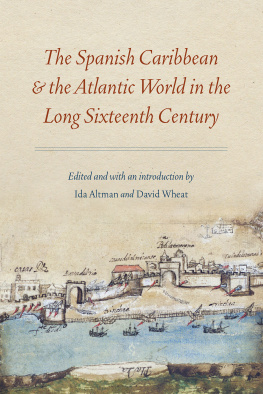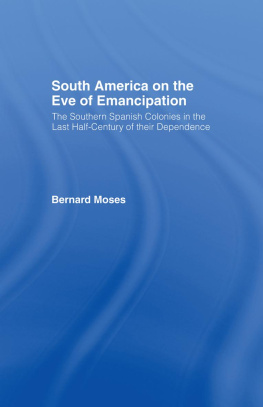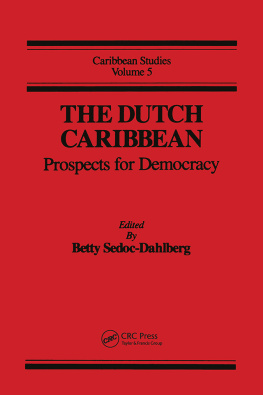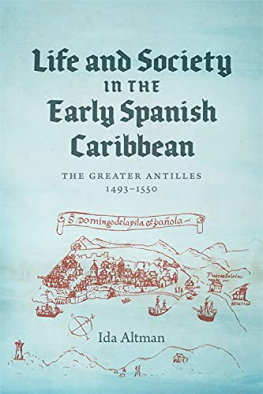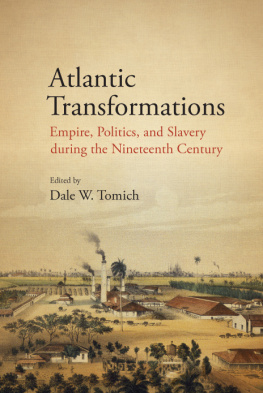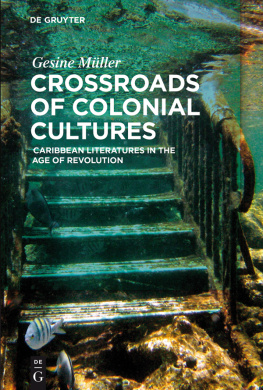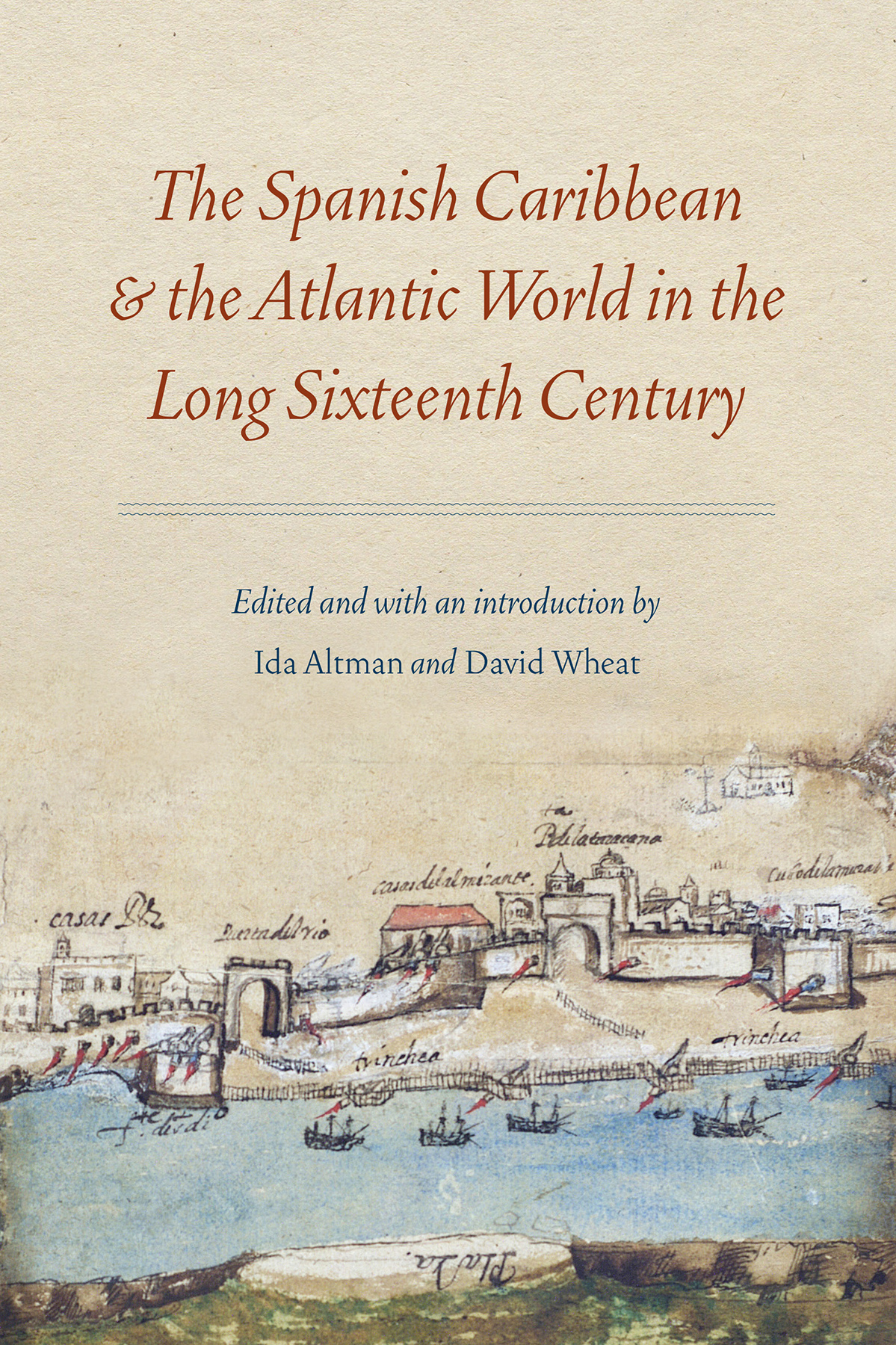
The editors have assembled a uniformly strong collection of essays. This is essential reading for those interested in Iberian America, the West Indies, and the Atlantic world. Bravo to Altman and Wheat!
Carla G. Pestana, professor of history and Joyce Appleby Endowed Chair of America in the World at the University of California, Los Angeles
This extremely interesting collection of highly original, engagingly written essays demonstrates persuasively the enormous richness and tantalizing complexity of the initial century of contact between Europeans and indigenous Americans in the Caribbean. This work provides a wonderful window on the early Americas.
Franklin W. Knight, Leonard and Helen R. Stulman Professor Emeritus and Academy Professor at Johns Hopkins University
This excellent volume brings together the work of veteran historians with that of a new generation of scholars in a series of detailed and innovative studies.
Stuart B. Schwartz, George Burton Adams Professor of History at Yale University
The Spanish Caribbean & the Atlantic World in the Long Sixteenth Century
Edited and with an introduction by Ida Altman and David Wheat
University of Nebraska Press | Lincoln
2019 by the Board of Regents of the University of Nebraska.
Cover designed by University of Nebraska Press; cover image: detail, Espaa. Ministerio de Cultura y Deporte. Archivo General de Indias. Mapas y Planos, Santo Domingo, 29.
All rights reserved.
Library of Congress Cataloging-in-Publication Data
Names: Altman, Ida, editor. | Wheat, David, 1977 editor.
Title: The Spanish Caribbean and the Atlantic world in the long sixteenth century / edited and with an introduction by Ida Altman and David Wheat.
Description: Lincoln: University of Nebraska Press, [2019] | Includes bibliographical references and index.
Identifiers: LCCN 2018039746
ISBN 9780803299573 (pbk.: alk. paper)
ISBN 9781496214355 (epub)
ISBN 9781496214362 (mobi)
ISBN 9781496214379 (pdf)
Subjects: LCSH : Caribbean AreaHistory16th century.
Classification: LCC F 2161 . S 653 2019 | DDC 972.9/02dc23 LC record available at https://lccn.loc.gov/2018039746
The publisher does not have any control over and does not assume any responsibility for author or third-party websites or their content.
In memory of Richmond F. Brown, teacher, colleague, friend, and beloved husband
Contents
Ida Altman and David Wheat
Lauren MacDonald
Cacey Farnsworth
Erin Stone
Ida Altman
Shannon Lalor
Brian Hamm
Marc Eagle
David Wheat
J. M. H. Clark
Pablo F. Gmez
Spencer Tyce
Gabriel de Avilez Rocha
We are grateful to the University of Florida History Department, Center for Latin American Studies, College of Liberal Arts and Sciences, and Office of Research for the generous support that made it possible for the contributors to this volume to meet in Gainesville in October 2016. The workshop provided a splendid opportunity to exchange thoughts about initial drafts of our papers and to benefit from the questions and comments of other scholars who attended. We thank Alisa Plant, editor in chief at the University of Nebraska Press, for her interest in and encouragement of the project from the very outset. We are also grateful to Michael Waylen, who produced the maps, and we would like to extend a special word of thanks to external reviewers Kris Lane and Ernesto Bassi, who provided a number of very helpful suggestions for improving the volume. Above all the editors are grateful to the colleagues whose work is presented here. Their innovative research and commitment to the project have made our idea for this book a reality.
Ida Altman and David Wheat
This volume brings together recent original research on the Spanish Caribbean in the sixteenth century. Historians often have treated the Caribbean during the century or so following the arrival of Europeans as important chiefly as a launching ground for expansion into the mainland areas that would become the principal sites for Spanish American society and institutional and economic development. In this perspective it is relegated to the position of a backwater, significant mainly for its strategic value and as a facilitator of the Indies trade. Although there certainly have been notable exceptions to this view, until fairly recently the Caribbean has not attracted anything like the scholarly interest that has fueled an enormous expansion of our knowledge of socioeconomic and cultural formation and change in what are usually considered the core mainland areas of early Spanish AmericaMesoamerica and the Andean region. Yet in the sixteenth century no other part of the Americas was more diverse and international or as closely tied to Spain, the islands of the Atlantic, western Africa, and the Spanish American mainland. The Caribbean experienced rapid growth, encompassed considerable ethnic, religious, and national diversity, mixing and interaction, and developed extensive networks of exchange both within and beyond the region while continuing to play an important role in the larger Spanish American colonization project.
Although interest in the Atlantic world has risen steadily in the past two or three decades, perhaps surprisingly that interest for the most part has notat least until fairly recentlyencouraged a closer look at the early Spanish Caribbean. Not only was the region in many senses a microcosm of the larger Atlantic world; arguably it was also the first full-fledged incarnation of that world, rapidly becoming the setting for imperial and national rivalries and geopolitics, interethnic conflict and accommodation, the mixing, movement, and displacement of peoples, new economic ambitions and opportunities, social experimentation, the testing and pursuit of new ideological and religious aspirations, and social and cultural interaction and hybridity.
How do we account for the scholarly neglect of the Caribbean in the years following the arrival of Europeans, particularly after Spaniards began to turn their sights toward the adjoining mainland? For several decades following their publication in the 1910s and 1920s, a series of journal articles by Irene A. Wright was perhaps the best available English-language scholarship on the early Spanish Caribbean.
During the years that interest in the sixteenth-century Caribbean languished among Anglophone historians, however, scholars from the Spanish-speaking Caribbean and Spain were pursuing archivally based research, mainly in the holdings of the Archive of the Indies in Seville. One result was the publication of a growing number of important compilations of transcribed documents, an effort that has continued to the present and been of enormous benefit to students and scholars.
The nature of the surviving historical records from the first century of European activity in the Caribbean may account in part for the reluctance of scholars to undertake serious research on the region. Although the documentation in the Archive of the Indies for the period is veryeven dauntinglysubstantial, it mainly consists of official reports, ordinances, and letters that focus principally on economic, fiscal, and administrative matters that were of greatest interest to the Spanish crown. The kinds of records on which historians in recent years have relied to address issues such as social and cultural change, the role and structure of family, kinship and households, the formation of ethnically diverse societies, or the process and impact of Christianization can be difficult to find in Seville.
Next page
